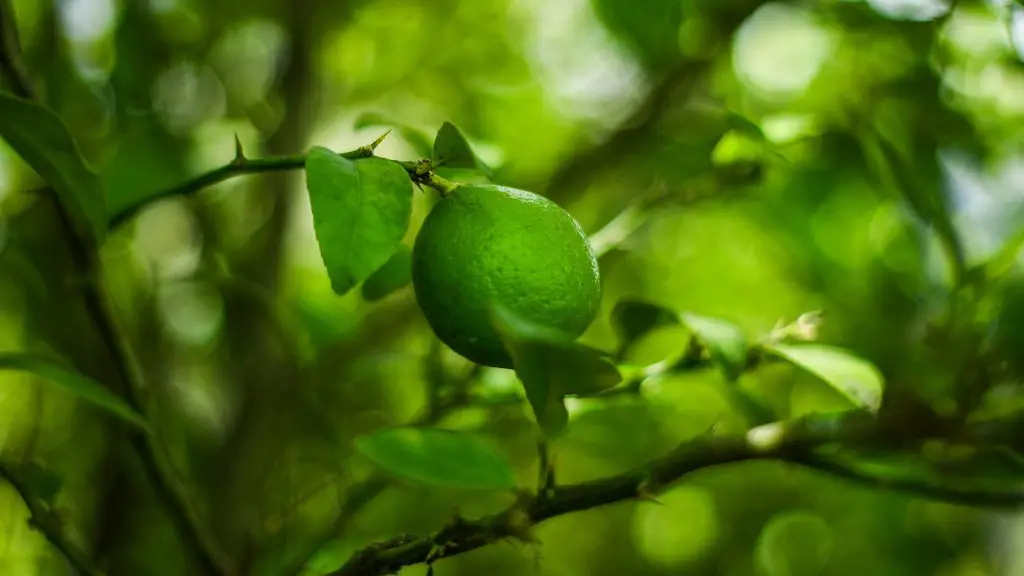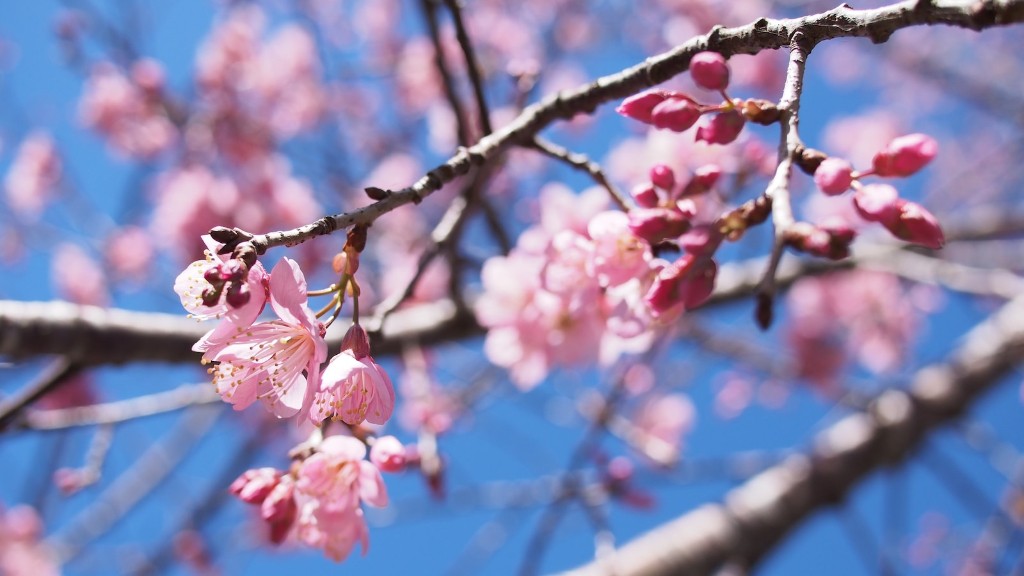Part 1: Grafting Hass Avocado Tree
Grafting Hass avocado trees is a horticultural process used by professional and amateur gardeners to develop and propagate hard-to-find varieties. By grafting, or joining two compatible parts of a tree or plant, the gardener can produce a new plant with the desired characteristics. While the method is not particularly difficult, the process does take some study, skill and patience to learn.
When grafting Hass avocados, you’ll need to ensure the tree is healthy and of a compatible variety. You also need to make sure that the budstock, or cion, has a healthy and robust rootstock, otherwise your graft will fail. Professional gardeners generally advise taking cuttings of similar varieties, as this can a more successful and reliable graft.
For the graft itself, the scion should be healthy and not damaged, while the rootstock should be semi-mature. The best time to conduct the graft is when the sap starts to flow, usually occurring around late winter or early spring. This is when the cambium cells between the two parts are more likely to fuse, allowing for successful grafting.
To graft properly, gardeners must use a knife and create a clean, straight cut along the rootstock and scion. Both parts must have a equal width, with each cut about 1.4 inches long for Hass avocados. It is then essential to join the two parts together so that the cambium cells can knit and form a strong, healthy graft.
Using grafting tape can help secure the two parts together, while grafting wax can help seal and protect the cuts from humidity and pests. Gardeners should ensure to leave the buds uncovered, and wrap the entire graft to keep it fully enclosed. After a few weeks, the graft should be inspected and examined for any signs of growth. If the graft was successful you will be able to see budding.
Grafting Hass avocados can be done by almost anyone, professional or amateur. While the process of grafting can be difficult and frustrating, the results can yield robust and strong avocado trees with an abundance of fruit. However, it is essential to understand and research the process fully before attempting to graft.
Part 2: Preparing the Trees for Grafting
Before attempting to graft, proper preparations for the Hass avocado trees must be made. This can include pruning the rootstock and scion, which is the first step in the process. Pruning is necessary in order to build up the tree’s reserves before grafting and make sure the tree is healthy and strong.
The rootstock should be pruned prior to grafting and the scion should only be pruned once the graft is successful. Pruning is an essential process, as it reduces the inner bark’s resistance and encourages new growth on the tree. Once the rootstock and scion are pruned and trimmed, they should be inspected and checked for any health issues.
Grafting requires the rootstock and scion to be compatible, thus you must ensure the trees are the same species and variety. Professional gardeners will often recommend taking cuttings of similar varietals, as this often provides more successful and reliable grafts. If the tree is of a compatible variety, you can then begin to prepare the rootstock and scion for the graft.
Preparing the rootstock and scion for grafting can include soaking, pruning and trimming both parts. Soaking the rootstock will help prepare it for the graft while trimming will reduce the bark’s resistance. Gardeners must make sure to also inspect the trees for any health issues, pests or diseases.
In order to be successful in grafting Hass avocados, it is essential to properly prepare the rootstock and scion prior to grafting. Doing so will not only reduce the bark’s resistance, it will also ensure the trees are healthy and the graft can take correctly.
Part 3: Pest and Disease Management
Before and after grafting Hass avocados, it is essential to manage and control any pests or diseases from affecting the tree. While some pests, such as mealy bugs, can damage the newly grafted tree, other diseases and viruses can have devastating consequences. Thus, it is critical to avoid any sort of contamination by closely monitoring and examining the tree prior and after grafted.
When grafting Hass avocado trees, professional gardeners generally advise examining the trees prior to grafting. This should include taking stem samples, as this can help identify any health issues or stress within the tree. Doing so can ensure the tree is not infected and the graft can be successful.
After grafting, it is also common practise to apply fungicide to the newly grafted Hass avocado trees. This will help reduce and inhibit the development of pests and diseases, as well as promote better healing of the graft. While applying fungicides, you must ensure to contact the local chemical suppliers for any advice.
Grafting Hass avocado trees is not only required for propagating commercial or home-grown varieties, it can also help protect the tree from pests and diseases. By examining the trees for health issues prior to grafting, applying treatment after grafting and taking necessary precautions, the tree can remain healthy and robust for years to come.
Part 4: Watering and Fertilizing
Once the graft has been successful, the tree must also be cared for and managed in order to ensure success. This can include watering, fertilizing, pruning and training the Hass avocado tree. The newly graft should be watered thoroughly and frequently after a successful graft, as the roots will not be able to gather enough water to sustain the tree.
Additionally, fertilizer should also be applied to the newly grafted node as this will help the tree develop its strength and nourish the soil. Professional gardeners suggest fertilizing with a nitrogen-rich soil, as this will help the tree receive the necessary nutrients. The fertilizer can also be applied during the winter when the tree is dormant, as this will avoid the tree losing strength.
Watering and fertilizing are some of the most important processes in maintaining the health and condition of the tree. The newly grafted Hass avocado tree must receive enough water and nutrients to help it develop, mature and produce. While watering and fertilizing should be done often, over-watering should be avoided as it can create health and growth issues.
Part 5: Pruning and Training
Pruning and training are some of the most common treatments for Hass avocado trees. While the pruning should be done before the graft is successful, it may be necessary to prune the scion after the graft has been completed. Pruning should be done to ensure the tree remains healthy, strong and in shape. It can also help manage any pests or diseases and encourage more vigorous production of fruit.
Most gardeners will also prune a newly grafted Hass avocado trees to manage the tree’s height, as well as its shape. This will help the tree receive adequate sunlight and remain healthy throughout the growth process. Moreover, training can assist in guiding the avocado tree to produce more fruit. After a successful graft, gardeners may also need to stake and tie the tree to ensure it is stable.
When pruning and training Hass avocado trees, the gardener should be aware of any pests or diseases that may affect the trees. Pruning and training can provide the tree with many benefits, yet it must be done correctly to avoid any harm incurred. Professional gardeners often provide adequate advice and guidance, helping homeowners care for their trees and achieve optimal results.
Part 6: Mulching and Weeding
While Hass avocado trees will rarely require weeding, it is recommended to mulch after a successful graft. Application of mulch can help the tree retain its moisture and receive adequate nutrients. Mulch can also help inhibit any weed growth, as well as help protect the tree’s root system.
Many professional gardeners suggest applying a thick, organic layer of mulch around the newly grafted tree. This will not only act as a barrier to any weed growth, it can also provide excellent insulation to the trees roots, helping it maintain its moisture levels, as well as protect it from any harsh temperatures.
It is also important to keep any weeds away from the newly grafted Hass avocado tree. Weeds can act a competition for moisture and nutrients, as well as create a habitat for pests and diseases. Thus, it is essential to check the tree and inspect it for any weed growth, especially in the spring and summer months.
Part 7: Inspecting the Tree
In order to ensure the tree is successful, and the graft has taken, homeowners must inspect the newly grafted Hass avocado tree regularly. Regular inspections will help farmers identify any health, stress or pest issues in the tree. It is also essential to identify and rectify any issues quickly, in order to maintain and sustain the health of the tree.
Homeowners should inspect the newly grafted tree for any signs of disease or pests. These can include wilting, discolouration or the formation of scabbing on the leaves. If any pests or diseases are identified, the tree should be constructed or sprayed quickly in order to stop the spread.
Furthermore, inspections should also include checking the tree for any budding or growth. If the graft was successful, the tree should visibly show signs of growth after a few weeks. This can include new branches or a thickening of the tree. If there is no visible growth, homeowners may need to carefully inspect and examine the graft to ensure its success.
Inspecing the newly grafted Hass avocado tree is a necessary practise, which will help ensure the tree is healthy and thriving. By taking the necessary precautions, homeowners can help protect and maintain their trees, as well as ensure the highest quality of fruit.



